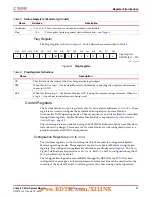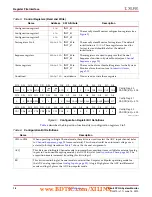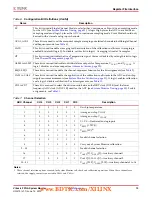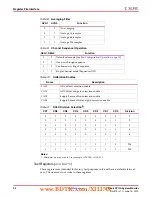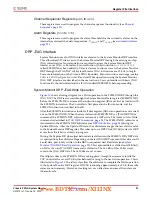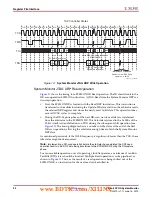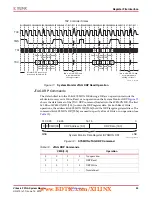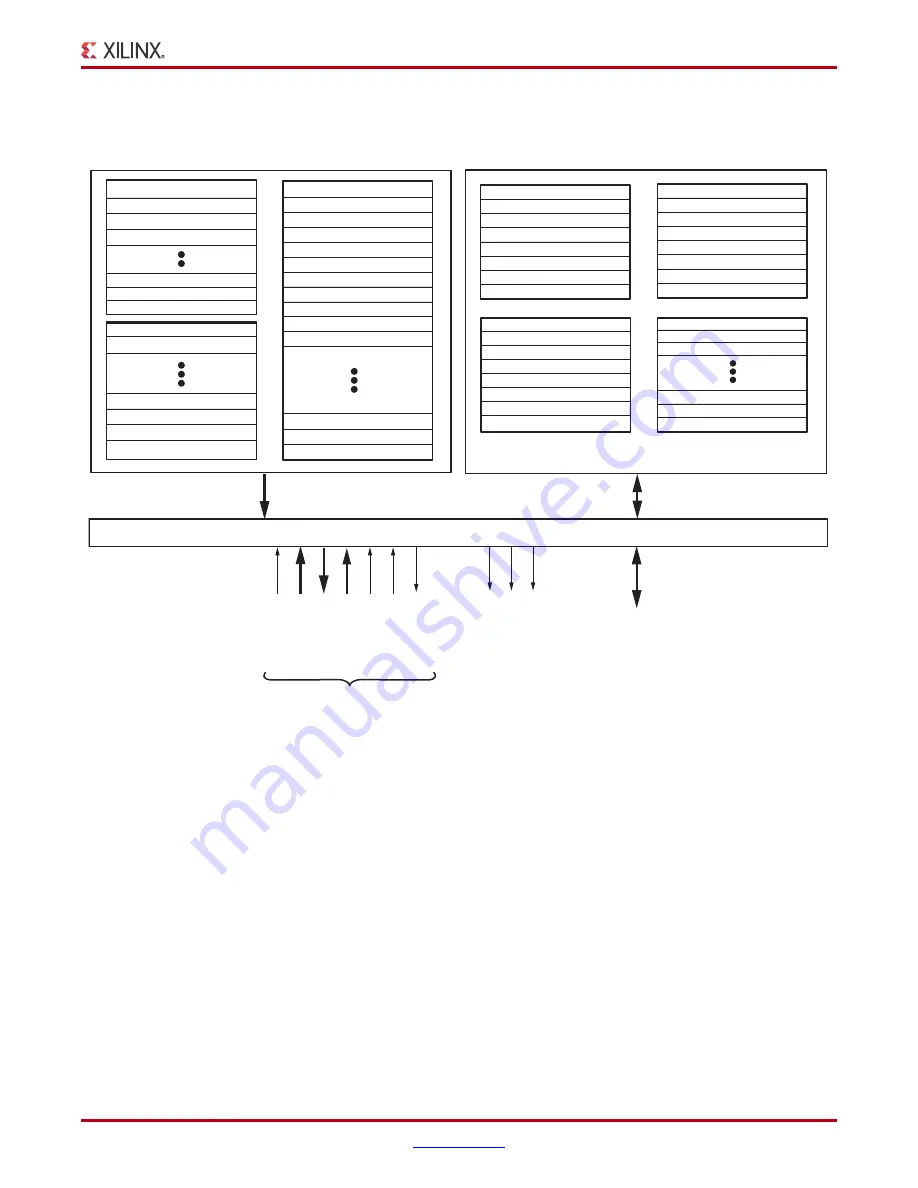
Virtex-6 FPGA System Monitor
15
UG370 (v1.1) June 14, 2010
Register File Interface
Status Registers
The first 64 address locations (DADDR[6:0] =
00h
to
3Fh
) contain the status registers that
are Read-Only and cannot be initialized when System Monitor is instantiated in a design.
The status registers contain the results of an analog-to-digital conversion of the on-chip
sensors and external channels. All sensors and external analog-input channels have a
unique channel address (see
). The measurement result from each channel
is stored in a status register with the same address on the DRP.
For example, the result from an Analog-to-Digital Conversion on ADC multiplexer
channel 0 (temperature sensor) is stored in the Status Register at address
00h
. The result
from ADC mux channel 1 (V
CCINT
) is stored at address
01h
.
The status registers also store the maximum and minimum measurements recorded for the
on-chip sensors from the chip power-up or the
last user reset
of the System Monitor logic.
See
for a list of the status registers and definitions.
X-Ref Target - Figure 7
Figure 7:
System Monitor Register Interface
DI[15:0]
DO[15:0]
D
ADDR[6:0]
DCLK
JT
A
GB
USY
JT
A
GLOCKED
JT
A
GMODIFIED
DW
E
DEN
DRD
Y
Config Reg. #0 (40h)
Config Reg. #1 (41h)
Config Reg. #2 (42h)
Test Reg. #1 (44h)
Test Reg. #0 (43h)
Test Reg. #4 (47h)
Test Reg. #2 (45h)
Test Reg. #3 (46h)
Alarm Reg. #0 (50h)
Alarm Reg. #1 (51h)
Alarm Reg. #2 (52h)
Alarm Reg. #4 (54h)
Alarm Reg. #3 (53h)
Alarm Reg. #7 (57h)
Alarm Reg. #5 (55h)
Alarm Reg. #6 (56h)
Undefined (58h)
Undefined (59h)
Undefined (5Ah)
Undefined (7Fh)
Undefined (7Dh)
Undefined (7Eh)
Sequence Reg. #0 (48h)
Sequence Reg. #1 (49h)
Sequence Reg. #2 (4Ah)
Sequence Reg. #4 (4Ch)
Sequence Reg. #3 (4Bh)
Sequence Reg. #7 (4Fh)
Sequence Reg. #5 (4Dh)
Sequence Reg. #6 (4Eh)
Temp (00h)
Vccint (01h)
Vccaux (02h)
VP/VN (03h)
Undefined (0Fh)
VAUXP[1]/VAUXN[1] (11h)
V
CCINT
Max (21h)
V
CCAUX
Max (22h)
Undefined (23h)
Temp Max (20h)
V
CCINT
Min (25h)
V
CCAUX
Min (26h)
Undefined (27h)
Temp Min (24h)
VAUXP[0]/VAUXN[0] (10h)
Undefined (0Eh)
Undefined (0Dh)
Control Registers (40h–7Fh)
Read & Write
Read Only
Status Registers (00h–3Fh)
Dynamic Reconfiguration Port - JTAG Arbitrator
Undefined (28h)
Undefined (29h)
Undefined (2Ah)
Flag (3Fh)
Undefined (3Eh)
Undefined (3Dh)
VAUXP[13]/VAUXN[13] (1Dh)
VAUXP[12]/VAUXN[12] (1Ch)
VAUXP[14]/VAUXN[14] (1Eh)
VAUXP[15]/VAUXN[15] (1Fh)
DRP
JTAG TAP
Controller
UG370_07_
060709
www.BDTIC.com/XILINX

















